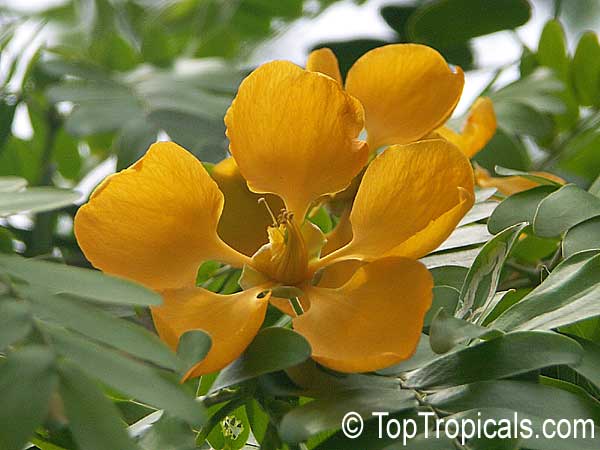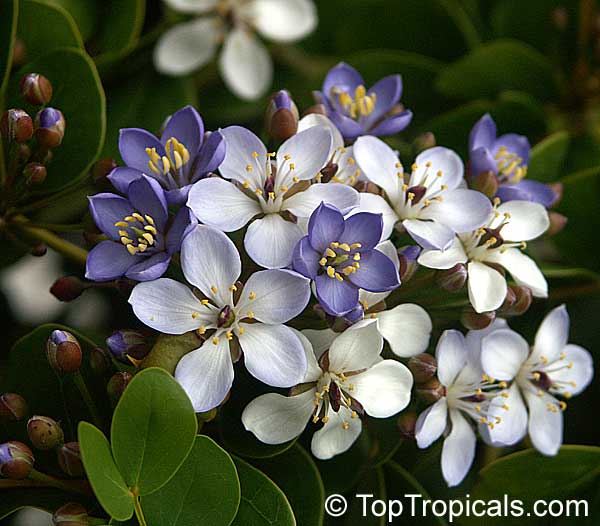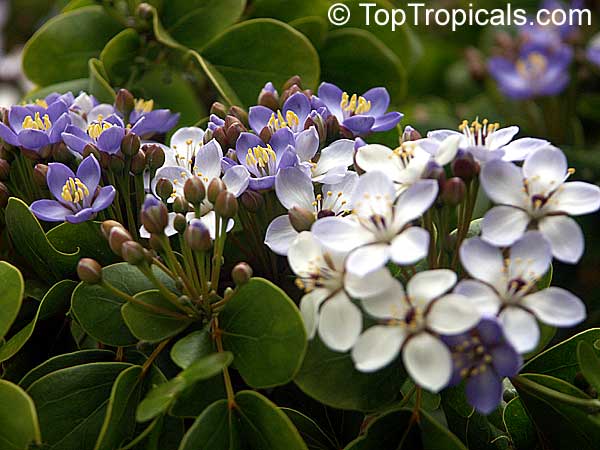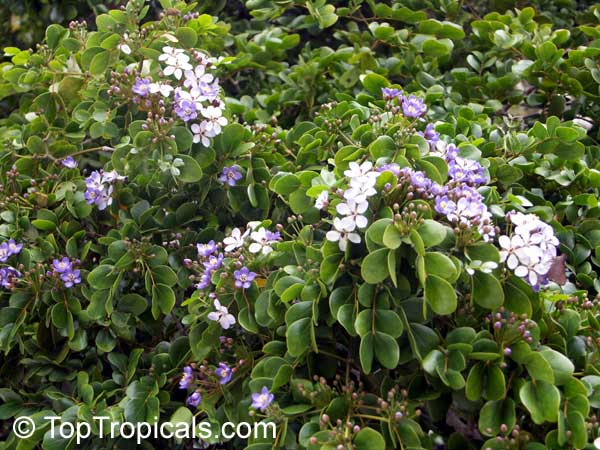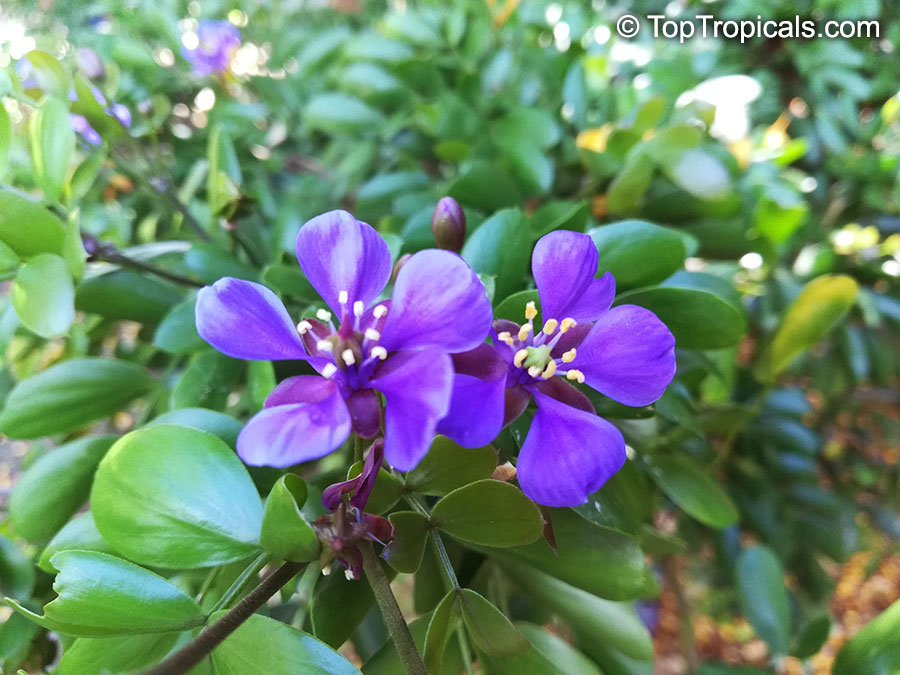Zygophyllaceae - Botanical Family
Top Tropicals Plant Encyclopedia
| Number of plants found: 7 |
Botanical name: Balanites maughamii
Common names: Torchwood, Menduro
Family: Zygophyllaceae
Origin: South Africa






Native to South Africa, Balanites maughamii (Torchwood) is a medium- to large-sized tree that can be found in warmer regions. It can either be a big tree, which can grow to be 20 ft or taller, or a small tree, which will grow to 10-20 ft in height.
The Balanites tree is known for needing full sun and moderate water to thrive, making it a great pick for those warm or dry climates. Plus, it is highly adaptive to various soil types from those in the tropics to arid landscapes.
Balanites maughamii is the birthplace to various products. It is used for its wood for building tool and furniture pieces and for its kernel for extraction for cooking oil. Moreover, its fruit is used for producing sweets and alcoholic beverages, and its kernel as medicine in a variety of traditional medicines/ETHNOMEDICINES. This tree is characterized as having spiny or thorny bark and leaves.
Gardeners in U.S.D.A. plant hardiness zones 9-11 can grow Balanites maughamii of their own in their garden. When doing so, it is important to provide the tree with well-drained soil, full sun and supplemental watering. If you are in a cold-climate region, Balanites maughamii can be grown in a pot with the same methods. The pot should be placed in a place that is out of the reach of frosts and cold winds.
Balanites maughamii is a great choice for creating a lush, exotic garden. It provides a beautiful backdrop to shade for areas of your garden and will add a deep, comforting green and with its thorny/spiny leaves adding a protective border.
Botanical name: Bulnesia arborea
Common names: Vera, Verawood, Vera Wood, Maracaibo Lignum Vitae
Family: Zygophyllaceae
Origin: Columbia and Venezuela






Vera Wood is an evergreen canopy tree cultivated for its buttery-yellow flowers and valuable hard and heavy timber. Introduced from Venezuela to South Florida by Dr. David Fairchild.
The legend goes that Chief Lignum Vitae had a daughter named Vera, which means Faithful or True. She lived along the Caribbean coast in what is now Colombia and Venezuela. Vera loved the outdoors and spent most of her time laughing and singing in the forests. Men who heard her singing fell in love with her, and came searching for. She hid in the forest, but they found her and pleaded with her to at least sing for them, even if she wouldn't consider marrying them. She obliged them by singing beautifully, and continues to sing right to this day.
Verawood typically gets to 40 feet or so, and makes a nice canopy tree. Drought tolerant once established. Needs good drainage, tolerates poor soils.
Recommended Fertilizer: SUNSHINE Megaflor - Bloom Nutrition Booster
Botanical name: Guaiacum officinale
Common names: Lignum Vitae, Guajacum, Guaiac
Family: Zygophyllaceae
Origin: West Indies









An evergreen tree with a twisted trunk, opposite oval compound leaves and showy bright blue flowers. Lignum vitae can be grown in full sun or partial shade on a wide variety of soils, including alkaline. Plants will easily tolerate wet or dry soil, wind, and salt, making it an ideal choice especially for seaside plantings.
Some of the resins active ingredients are effective anti inflammatory agents.
Similar to Guaiacum sanctum, but flowers are brighter and bigger.
Botanical name: Guaiacum sanctum
Common names: Lignum Vitae, Tree of Life, Gaiac tree
Family: Zygophyllaceae
Origin: Antilles, Florida, Mexico to northern South America, West Indies










This small tree, native to the Antilles, is characteristic of xerophilous regions. This tree is sometimes referred to as the "tree of life" because of its many uses. Its wood, once commercially used in construction because of its density, was so exploited that the Gaiac, as it is locally called, is now a protected species. The bark of the Gaiac tree was used in times past for medicinal purposes. Its sap was also attributed with the power to relieve arthritis. Its glossy leaves are a rich green and in general, this tree flowers twice a year. Its abundant flowers range in color from purple to blue and pale over time. Its red-orange-colored fruit is about 1" in diameter. Lignum vitae is a great medium for carvings. Lignum vitae wood was used in the past to make ball bearings because its extremely high resin content makes it self-lubricating. Another place that Lignum vitae were used was in United States courtrooms, where the judge's gavel was traditionally made from this fine wood. Watering Needs: Moderate water, needs good drainage, somewhat drought resistant. The blue flower is the national flower of Jamaica.
Botanical name: Guaiacum sp.
Common names: Lignum Vitae, Guajacum, Guaiac
Family: Zygophyllaceae
Origin: West Indies









Guaiacum, or Guajacum, is a small genus of evergreen resinous trees or shrubs with opposite oval compound leaves and showy bright blue flowers.
Species:
Botanical name: Larrea tridentata
Common name: Creosote Bush
Family: Zygophyllaceae
Origin: Mexico, Texas






Larrea tridentata is native to Mexico, Texas, and the southwestern US as far north as California and Idaho. It is hardy in USDA zone 9-11 and prefers full sun. It is very tolerant of both dry and moderate water conditions, making it suitable for most climates. This species can also tolerate saltwater and alkaline soils.
When growing in a pot, the creosote bush should be placed in an area with plenty of full direct sunlight and the soil kept moist but not soggy. It should be placed in a pot with well-draining soil and occasionally watered with liquid fertilizer. In cold regions, Larrea tridentata may be grown in an indoor pot. Light requirements are the same, with the addition of using a grow light to ensure adequate sunlight. Ensure that the soil is allowed to dry out between watering, as overly wet soil can be damaging to the creosote bush. The soil should also contain adequate amounts of nitrogen, phosphorus, and potash.
The creosote bush is considered an ethnomedical plant, and has been used for centuries by Indigenous people to treat a wide range of ailments. It was also used for fuel, to make bows, and for other medicinal purposes. The plant's flowers are incredibly attractive to pollinators and are a magnet for visitors from the insect world. As a large shrub, Larrea tridentata typically grows to heights of 5-10 feet. Over time, the plant also develops an umbrella-like shape and its resinous leaves emit a distinctive quick-drying aroma.
Botanical names: Porlieria lorentzii, Guaiacum microphyllum
Common name: Guayacan
Family: Zygophyllaceae
Origin: northern South America






Similar to Guaiacum sanctum
Use link to repeat this search:
https://toptropicals.com/cgi-bin/garden_catalog/cat.cgi?search_op=and&keyword_op=and&language=e&family=Zygophyllaceae
&number=10&no_change_lang=1&user=tt&sale=1&first=0











